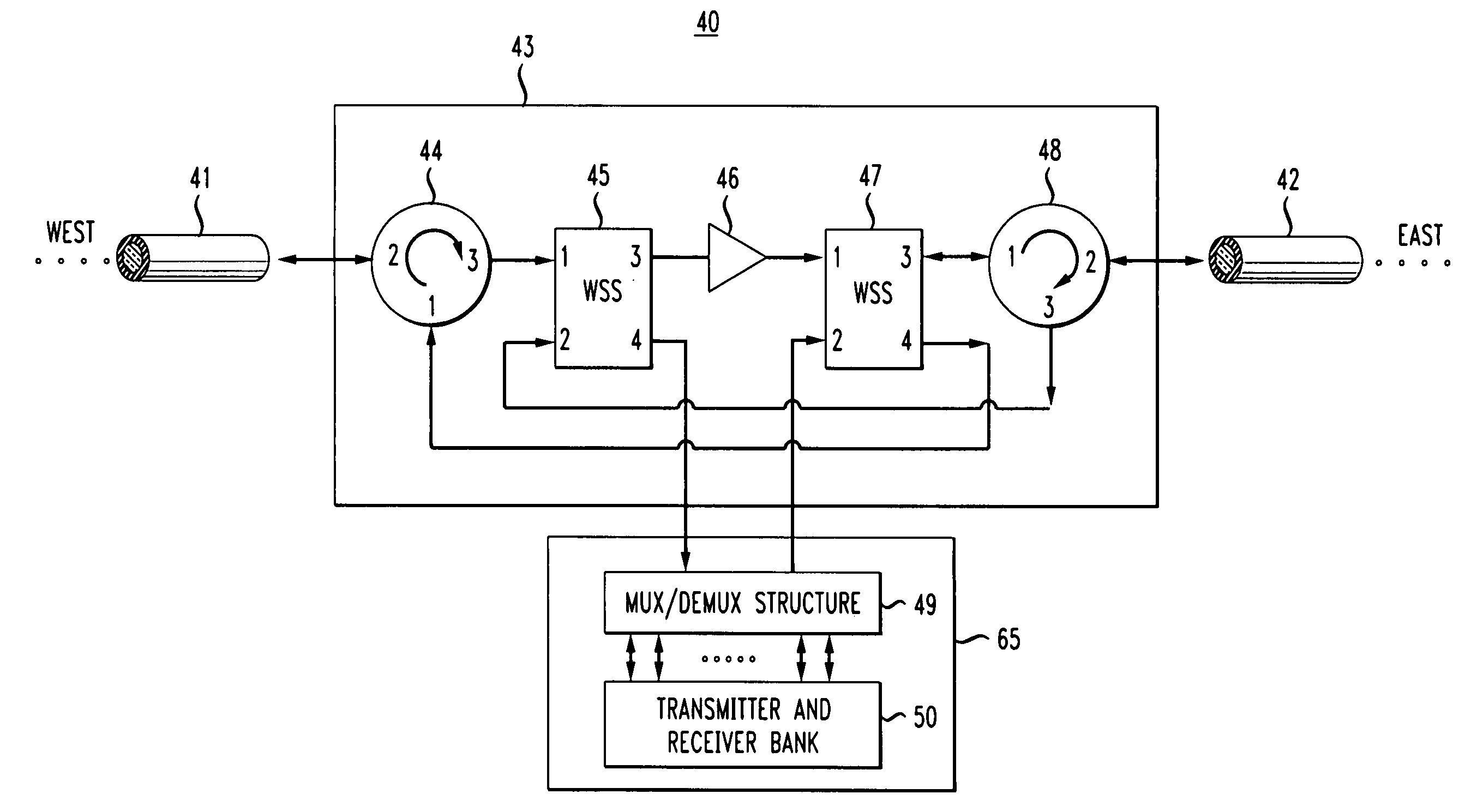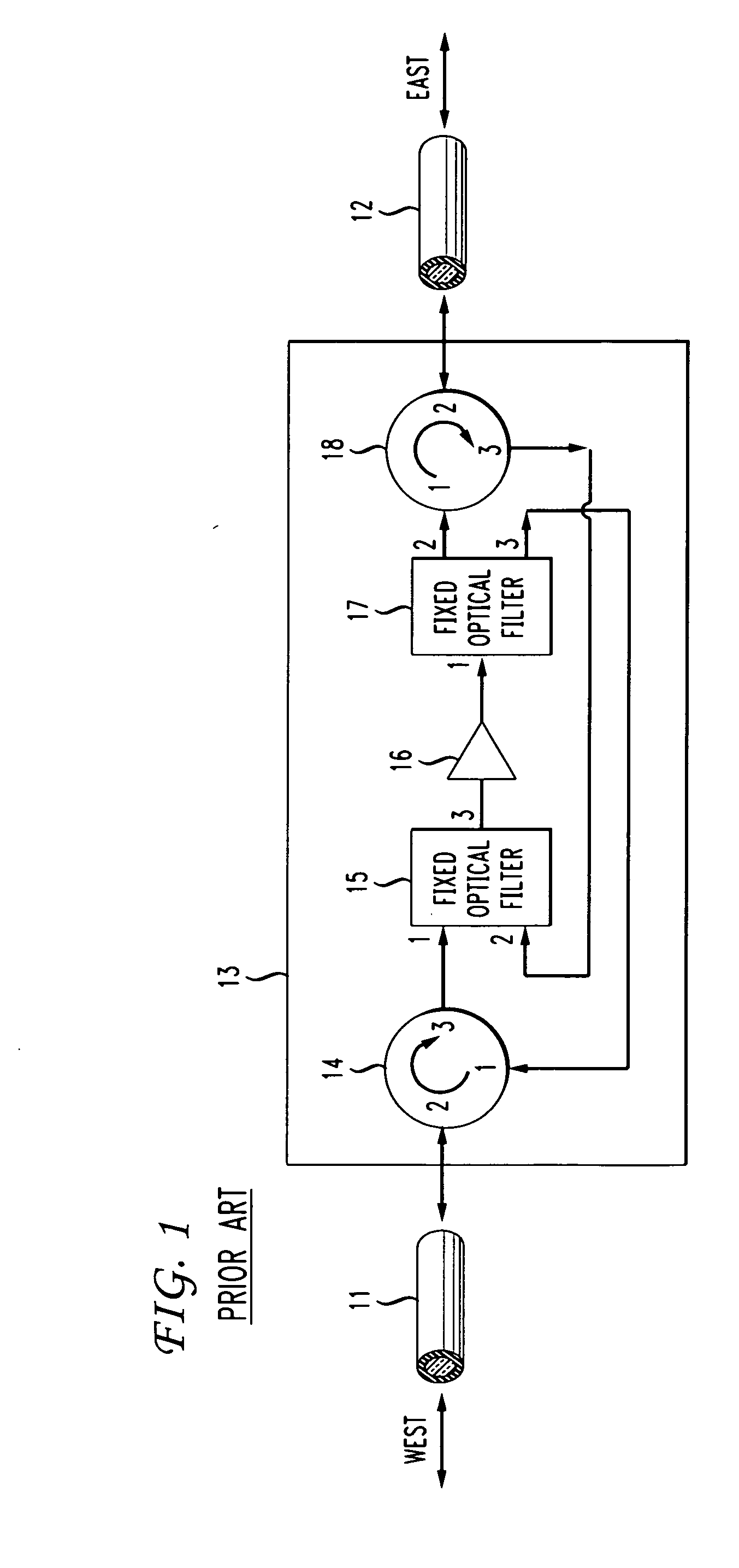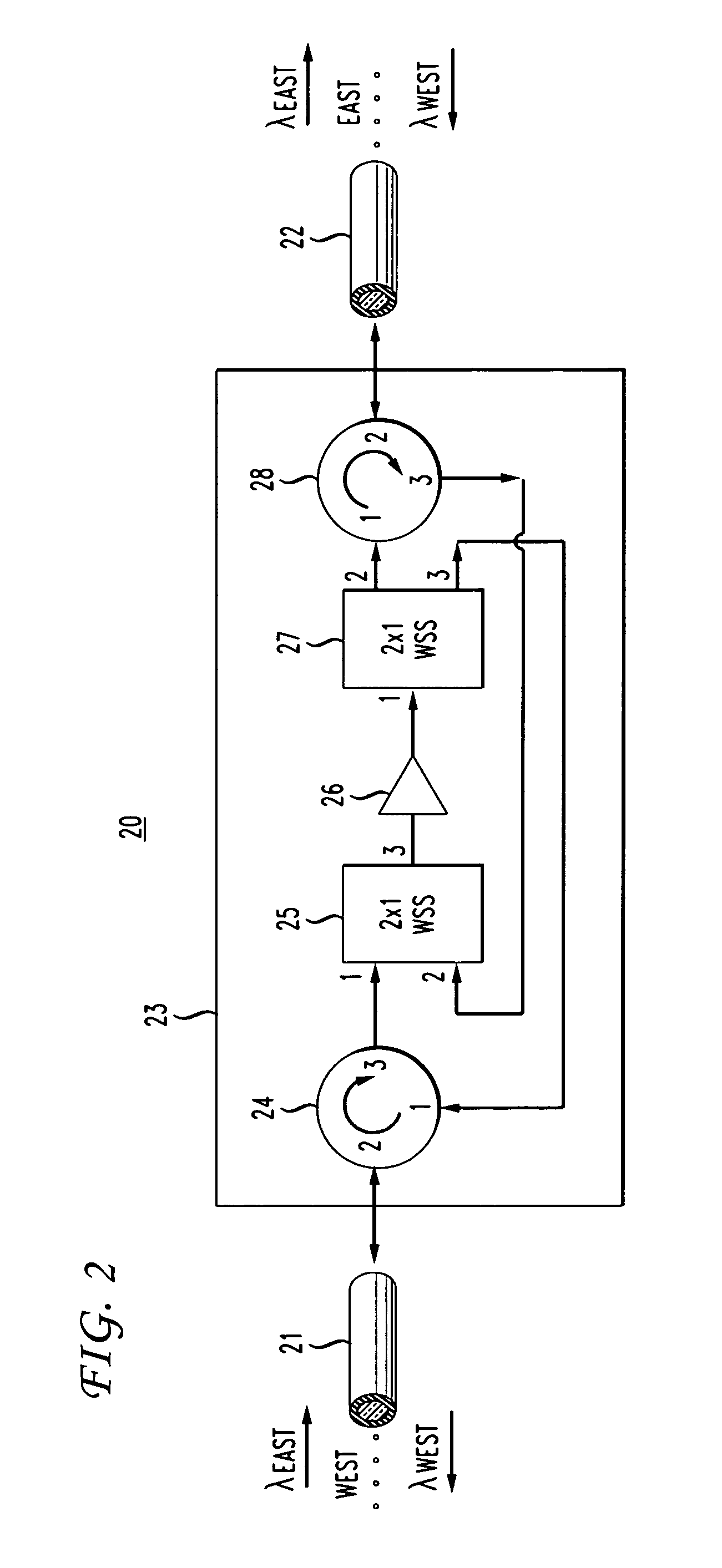Dynamic allocation of bandwidth in a bidirectional optical transmission system
a transmission system and dynamic technology, applied in the field of optical transmission systems, can solve the problems of inefficiency of configuration in fig. 1, inability to adapt to changing traffic demands, and insufficient wavelengths
- Summary
- Abstract
- Description
- Claims
- Application Information
AI Technical Summary
Benefits of technology
Problems solved by technology
Method used
Image
Examples
Embodiment Construction
[0017]FIG. 2 shows an embodiment of a bidirectional communications system 20 in accordance with the present invention. As shown, a programmable optical component 23 is coupled to a bidirectional optical fiber 21 and a bidirectional optical fiber 22. Bidirectional optical fiber 21 is operable to transmit a set of available wavelengths λ1 . . . n to and from a West direction, and bidirectional optical fiber 22 is operable to transmit a set of available wavelengths λ1 . . . n to and from an East direction. Programmable optical component 23 has an optical circulator 24, a 2×1 wavelength selective switch 25, a gain block 26, a 1×2 wavelength selective switch 27, and an optical circulator 28, all known devices in the art. Gain block 26 may be an erbium doped fiber amplifier or any other amplifier known in the art.
[0018] Wavelengths traveling from West to East, λEast, on bidirectional optical fiber 21 will enter programmable optical component 23 and be input to port 2 of optical circulato...
PUM
 Login to View More
Login to View More Abstract
Description
Claims
Application Information
 Login to View More
Login to View More - R&D
- Intellectual Property
- Life Sciences
- Materials
- Tech Scout
- Unparalleled Data Quality
- Higher Quality Content
- 60% Fewer Hallucinations
Browse by: Latest US Patents, China's latest patents, Technical Efficacy Thesaurus, Application Domain, Technology Topic, Popular Technical Reports.
© 2025 PatSnap. All rights reserved.Legal|Privacy policy|Modern Slavery Act Transparency Statement|Sitemap|About US| Contact US: help@patsnap.com



